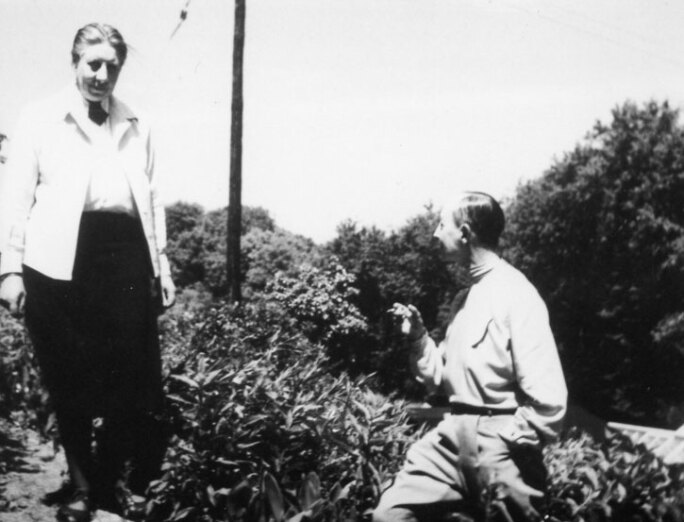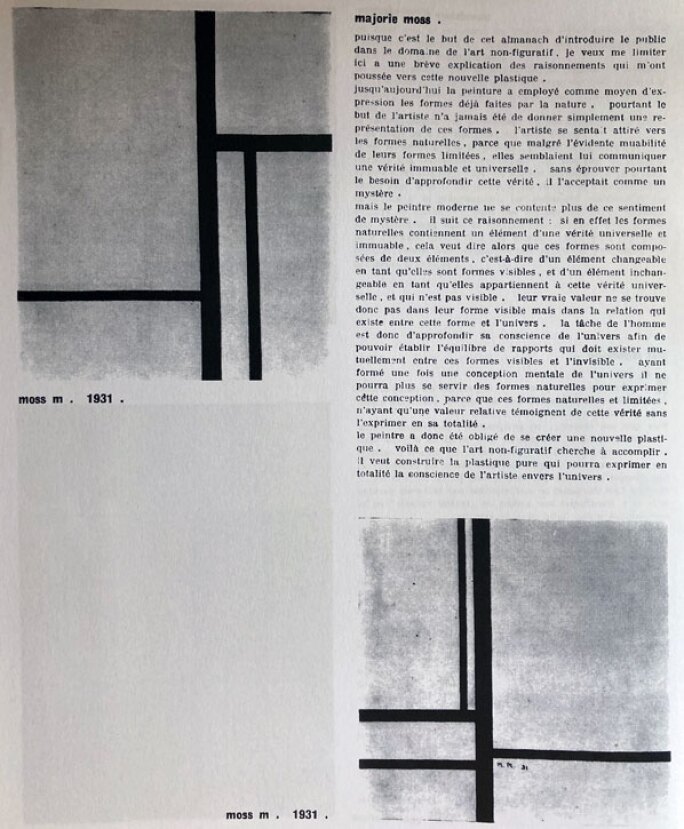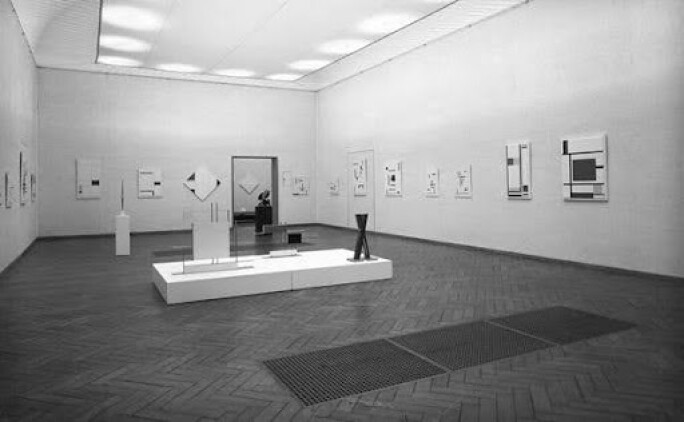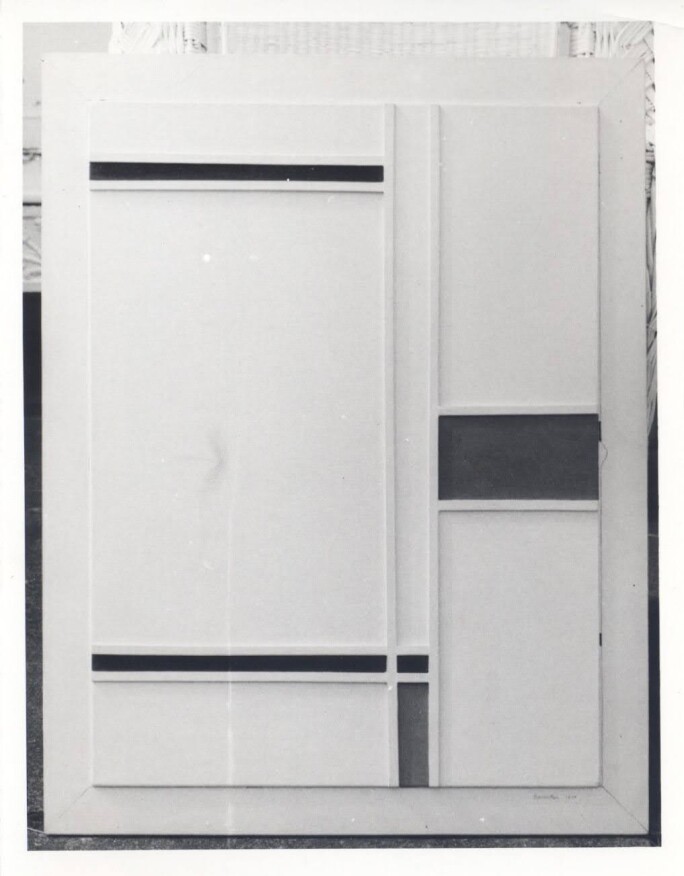One of the leading British artists to be associated with the De Stijl movement, Marlow Moss first studied under Fernand Léger and Amédée Ozenfant before meeting Piet Mondrian in Paris in the 1930s, an encounter which fundamentally shaped both of their artistic directions. Mondrian’s rational abstract approach to painting resonated with the tenets of geometric cubism which Moss had learnt under the teaching of Leger. Letters from Georges Vantongerloo, artist and founding member of the De Stijl group, suggest it was in fact Moss who introduced the double line into Mondrian’s vocabulary.

Moss met Mondrian through her longtime partner and lover Antoinette (Nettie) Hendrika Nijhoff-Wind, to whom the present work was initially gifted to. Nettie was a writer and married to the poet Martinus Nijhoff, and they were highly involved in the artistic circles of Europe, meeting Mondrian in the artist colony in Laren in the Netherlands where they lived until 1910s. While in Paris, Moss was a founding member of the Abstraction-Création association, a group which promoted abstract art when the Surrealist movement was growing in dominance, and she was the only British artist to feature in all five published annuals.

Moss was a follower of the Constructivist movement, which academicised and bridged together art and sculpture, and her vision can be seen in the present work. In White, Black, Blue and Red, Moss has placed strips of wood relief on to the canvas to form a grid like structure, before painting over both canvas and wood as if one continuous surface. Her use of block colour, in a method most visually similar to that of a Mondrian painting, demonstrates her belief in the Pythagorean ideal that a better society is based on spirituality rather than factual representation and is reached through the application of mathematical principles.

While the French capital afforded Moss the personal and artistic freedom she craved, her life on the continent was cut short by the rise of Nazism. A queer, Jewish woman, Moss abandoned her studio and fled to Cornwall, England, narrowly escaping the onslaught of German troops. Her artworks were not as fortunate - her Normandy studio was hit by shelling that destroyed many of her early works, making White, Black, Blue and Red particularly rare to see in her oeuvre.
The present work was painted in Lamorna Cove on the Cornish peninsula in 1944, the year Moss’s studio was bombed. The present work synthesises Moss’s earlier forays into De Stijl and Constructivism, combining the latter’s exploration of sculptural reliefs and spatial dynamics with the former’s focus on primary colours and flat grids. Her later work does not embrace colour, sticking to mainly monochrome palettes, but stay loyal to her lifelong beliefs in the spiritual qualities of art and painting. After the turning point of 1944, she also looked more towards working in sculpture, as she was a student of architecture.

White, Black, Blue and Red is very special to have been in the collection of Nettie Nijhoff’s son, who alongside his mother, looked after Moss’ estate. These works were in Switzerland, some in the family house, and others in the art storage of Gimpel & Hanover Galerie, Zurich.
Described by Fernand Léger, as an artist “who resists the modern mania for classification”, Moss’s pursuit of liminality, of universal truth and harmony, was truly reflected in her personal life as well as in her art.